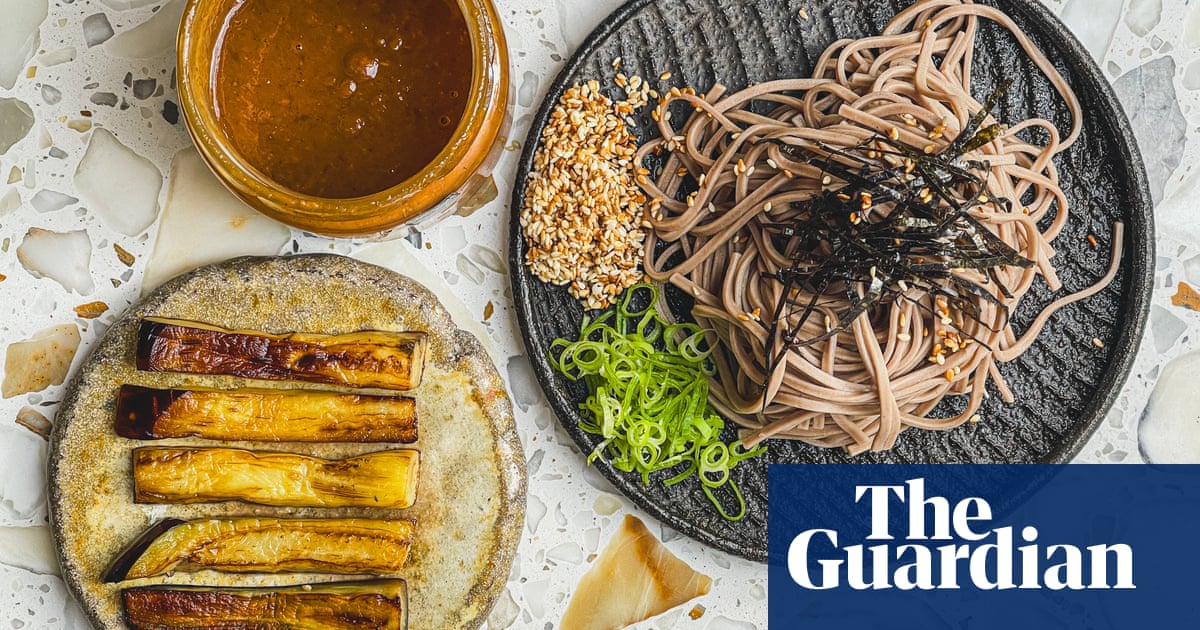Ajar ofgoma dareis a new favourite fixture in my fridge door. This Japanese-style condiment, dipping sauce and dressing made from ground sesame seeds is powerful in flavour, sweet, sour and creamy all at the same time, while the addition of grated ginger and/or garlic makes it wonderfully piquant, too. It’s also very moreish and hugely versatile, meaning you can serve it with everything from a traditionalshabu shabuhot pot to cold noodles, tofu, aubergine and slaw; in fact, it’s so tasty I have to stop myself from eating it straight from the jar. My recipe uses the leftover tahini in the bottom of a jar and comes together in the jar itself, so minimising both waste and washing-up. Simply add all the ingredients, scrape down the sides and shake (you can apply a similar method to the ends of a peanut butter jar, too, for a nutty, satay-style twist).
This is my take on an old favourite fromKoya in Soho, London. I hadn’t thought to recreate it at home before, but its simplicity and incredible flavour mean it’s easy and satisfying to make from scratch. It’s a super-resourceful way to turn a few scraps of tahini into a restaurant-quality condiment. I’ve listed the basic ingredients and given optional extras such as mayo (to make it extra creamy) and white miso (to add salt and umami complexity). Think of each ingredient as a seasoning, so adjust to taste to add more punch and flavour (garlic and ginger), sweetness (honey, miso), sourness (vinegar) or salt (soy, miso).
MakesAbout 100ml(or enough for 2 generous servings)
1 nearly empty tahini jar, with about 2-3 tbsp remaining2 tbsp soy sauce, or tamari1 tbsp rice vinegar, or other vineger such as cider vinegar2 tsp honey, or sugar
Optional extras1 tbsp mayonnaise1 tsp white miso paste1 tsp toasted sesame oil1 tsp freshly grated ginger1 small garlic clove, peeled and finely grated
To serve (all optional)Soba noodlesSauteed aubergineShredded noriFinely sliced spring onion topsToasted sesame seeds
Add the soy sauce, vinegar, honey and two tablespoons of water to the near-empty tahini jar, then add the optional mayo, white miso paste, toasted sesame oil, ginger and/or garlic. Stir with a small spatula or spoon, scraping the sides and bottom of the jar to loosen and incorporate the tahini, then screw on the lid and shake vigorously until smooth and emulsified, again scraping the sides as necessary. If the sauce seems a bit too thick, add a splash more water to loosen and shake again.
Use immediately, or store in the fridge for up to a week. The sauce may thicken up in the fridge and may need a little water and another shake before using.
